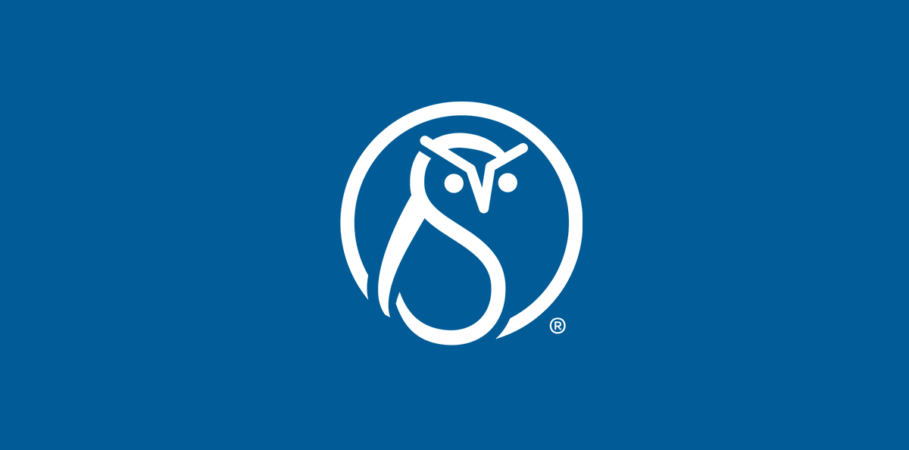Content ops stakeholders: IT (podcast)
Podcast: Play in new window | Download
Subscribe: Apple Podcasts | Spotify | Amazon Music | Email | TuneIn | RSS
In episode 108 of The Content Strategy Experts podcast, Alan Pringle and Gretyl Kinsey kick off an occasional series about stakeholders and content operations projects. In this episode, they talk about IT groups as an important stakeholder in your content operations.
“The IT department can be such a great ally on a content ops project. IT folks are generally very good at spotting redundancies and inefficiencies. They’re going to be the ones to help whittle that redundancy down.”
– Alan Pringle
Related posts:
Twitter handles:
Featured image: nanastudio © 123RF.com
Transcript:
Alan Pringle: Welcome to The Content Strategy Experts podcast, brought to you by Scriptorium. Since 1997, Scriptorium has helped companies manage, structure, organize, and distribute content in an efficient way. In this episode, we talk about IT groups as an important stakeholder in your content operations. Hi, I’m Alan Pringle.
Gretyl Kinsey: And I’m Gretyl Kinsey.
AP: In this episode, we’re going to kick off an occasional series about stakeholders and content operations projects. And yes, even though content is the primary umbrella, primary objective on a content operations project, there’s still many stakeholders from all across an organization that are going to be involved, so it’s not just about the content creators and the people authoring content. What are some of the other ways that stakeholders come into play, Gretyl, on a project?
GK: Well, a lot of times there will be the most important stakeholder, which is your executive champion, who is in charge of the money and the resources to actually get your project approved and get it started, so that’s always someone that we make very definite sure to talk to when we get involved in content operations. You might also have developers or engineers who are working on the product itself. And of course, as we’re going to be talking about today, you might have IT, information technology, a department that’s in charge of managing your tools and your processes. So all of these other groups, even if they don’t directly create content themselves, they definitely have an important stake in it, and they need to be part of the decision making processes.
AP: I agree. It essentially takes a village to get one of these projects done, so it’s really good to have an understanding of other people’s responsibilities in the organization and to get their viewpoints and feedback to be sure that your content ops project is going to be successful.
GK: Absolutely. So as Alan said, we want to start this series by focusing on information technology or IT departments. And that’s because they are significant stakeholders in content projects. We’ve had a lot of times in the past with projects that Scriptorium has been involved in where it was actually the IT department who came to us first and who initiated the entire content strategy overhaul.
AP: Absolutely. And that’s an important thing to note. A lot of people may assume, just because it’s a content project, that we’re going to be contacted by the people authoring that content. And in multiple cases, that has not been the case at all. We have had people contact us who were much more into the tools and tool management and information technology side of a company who didn’t create content at all, yet it was still part of their responsibility because they’re the ones overseeing the tool chains and some of the processes for those groups, content creating groups.
AP: And speaking of those content creating groups, I think it is fair to say in our years of doing this, Gretyl, that we have seen a lot of content folks who had some gripes about IT groups. And then the IT people had their own stories about the content creating people. So there’s a lot of that going on, and we could spend how many podcasts on that topic, but I don’t think it’s that interesting. What we want to focus on instead is really how the IT department can be such a great ally on a content ops project. And they really have some skills and viewpoints and access that are absolutely necessary to get things running and to work well.
AP: And one of the first things that I can think of in regard to that general skillset is that IT folks are generally very good at spotting redundancies and inefficiencies. And that kind of makes sense because if they are managing the infrastructure of tools, they’re going to be very sensitive about, for example, if you have multiple tools doing the same exact thing within an organization, especially after say a merger, where you’ve got two different companies coming together, and you’re going to have all these layers of tools doing the same thing. They’re going to be the ones to help whittle that repetition, that redundancy down.
GK: Yeah, of course. I know one of the earliest projects that I was involved in that had IT coming to us as the primary stakeholder who was interested had actually spotted not only kind of these redundancies or inefficiencies in what tools they had, but also in how people were using them. So they kind of had a little bit more insight into how content creators were kind of doing a lot of manual processes with these tools that they had in place that could’ve been something more automated, how they were spending a lot of time on these things that really they knew of much more efficient ways to handle them just by nature of being in IT and seeing other departments kind of handle those processes more efficiently. So that’s definitely a good thing that they kind of have this broader view of what tools should be in place, what the kind of overlaps are, if there are any, and how they can get those out so that you could have a much more efficient way of using the tools that you have in place.
GK: And I think that kind of leads into another strength of IT departments, which is that they tend to have a sort of more broad, or company wide, or enterprise level view of the organization. And that’s just because of the way that they manage tools across departments. They can really kind of have that bigger picture of how they’re being used.
AP: Absolutely. And that perspective is sort of like when you bring in a consultant like us. We bring in a third party view because we’re not so close to it. We can give objective advice on how things are set up, how they’re running. And the IT group can do something very similar. They’re not in there day to day using the tools, authoring, or whatever. They’re a step back, so they’ve got more of a bird’s eye view, and that can be very, very helpful, like you mentioned, in spotting these redundancies.
AP: I think another thing worth pointing out is these folks usually have programming chops. And they have the skillsets to customize things, and they’re not scared to do so. A lot of times, to get maximum use out of your content strategy plan to be sure it’s working the best, it may require some very particular configuration, connections between tools, et cetera. And when you’ve got an IT group that’s savvy at those things, that is a huge, huge benefit to you and your content project.
GK: Absolutely. I really can’t think of a case that I’ve ever seen where one single tool did everything that an organization needed out of the box. And I think that’s true the more tools that you get in your tool chain, you are going to need some sort of custom configuration most of the time. And so when you’ve got an IT department who is really involved in the overall content strategy, they can help you see what exactly are the customizations that you’re going to need. They can be a really valuable asset to your content department in making sure that those customizations are done. And so again, that’s why it’s just really important to involve them from the outset before you really even get into the process of choosing what those tools are going to be. They can help you make the decisions about what customization might be involved based on what you choose.
AP: And I think it’s worth acknowledging that making those customizations does cost money. And when you’re doing your content strategy planing for how you want your content ops to go, looking at return on investment is going to be a big part of that assessment, so getting that feedback and input for what it’s going to cost to stand up these customizations, these configurations, is very important because you need that information to figure out essentially how long it’s going to take you with improved efficiency or whatever, to basically recoup those costs. So yes, customization is a great thing, but you need to have the clear understanding fairly early on about the kind of cost projections to get that work done and how you’re going to get that money back and then make more gains beyond that to make it worth everyone’s while to do that customization.
GK: Absolutely.
AP: We’ve kind of already touched on this, but let’s take a little time to talk about the kind of functions that an IT group is going to handle, contribute to, in content operations projects, or even the content strategy planning that precedes it. What are some of the things that come to your mind, Gretyl?
GK: So one of the first ones that comes to mind right off the bat based on what we just talked about is enterprise architecture. And that’s because like we said before, IT has that kind of big picture, bird’s eye view of all of the tool chains across the organization. So when it comes to developing your information architecture for content, particularly at the enterprise level, thinking about not just one type of content and one department, but all of your content across an organization, IT can really be helpful in figuring out what your strategy is going to be for that enterprise level information architecture.
AP: And speaking of enterprise, the more organizations move into the content as a service model, where basically it’s less about delivering a PDF, or a help set, or a marketing slick, or whatever, it’s more about giving the end user whatever kind of content they want in the specific format they want it, when they want it. That really requires a lot of connectivity. It requires a lot of understanding of the entire tool chain and how everything is connected within the enterprise. And the more we move to that content as a service CaaS model, the more critical I think IT is going to become in these sorts of projects.
GK: I agree. I think we’re seeing a lot more demand for Content as a Service for custom, personalized delivery for on-demand content. So I agree absolutely that IT is going to be playing I think an even bigger role as more of these kinds of projects are undertaken.
AP: Something else that I think that really falls into their wheelhouse is to help with evaluating new tools that you’re going to need to develop, manage, and distribute your content. If you’re doing, for example, a new content management system, you’re probably going to set up some proofs of concept with a vendor or two and get that set up and running. And it would behoove you to get some input from IT about how those tools are set up and how efficient and how well they work, also to do security checks. I think a lot of tools now are more in the cloud. Less and less, we’re seeing companies deploy tools on premise on their own servers. Instead, they use cloud based tools. Even so, security is still a concern. And that is something that they need to be part of. How you stand those tools up, how good the security is, all those kinds of things that you want to look at in a proof of concept, that definitely needs the input from your IT people.
GK: Yes, absolutely. And as consultants, we’ve been involved in that process of the demonstrations and the kind of questioning of the vendors with regard to choosing what tools you want. And there have been some of those times where IT was heavily involved. They helped come up with a lot of the information, a lot of the feedback, a lot of the things that were asked of those vendors during that demonstration and kind of testing process. And then we have had other projects where sometimes tools were chosen, and then later the company came back and said, “We should’ve had IT involved and we didn’t, and that was a mistake because we’re seeing that we might’ve made a wrong choice here. We didn’t evaluate this one particular aspect that was really important.” So definitely when you are looking at tool options, especially if you’re choosing more than one tool, so if you’re looking at maybe a CCMS and an LMS, that you would really want to have IT involved to help make those decisions and make sure that everything is going to work together as you intended to.
AP: Right. And once again, I go back to the whole enterprise level viewpoint, the connectivity among these systems. You cannot have blinders on and pick a tool that suits just your purpose. It has to fit in the bigger ecosystem you have for tools. Otherwise, everybody’s going to have their own little tool communities, and that’s just a mess that you don’t want, and frankly, an IT department probably is not going to tolerate very well.
GK: Yeah, exactly. And that’s a really great point because it leads us to the next kind of thing on our list of how IT can help with a content project, which is that they are really good at making those connections among disparate departmental content and data sources. So if you have a situation where you’ve got, let’s say, technical content, training content, marketing content, and all that needs to be connected and you don’t really have the infrastructure for that, IT is going to be your number one resource to make sure that can happen.
AP: Right. And I think one other thing that kind of puts a bow around all this is content governance. And I know you’ve talked a lot about that, so I’m going to kind of let you take that on because that’s been a topic I know that you’ve written about and talked about on the podcast previously.
GK: Yeah, sure. So content governance is what happens when you need to have someone in charge of overseeing all of your content processes and the changes to those processes over time, the evolution of those processes. And again, this is a place where it’s very important to have IT involved. A lot of times when we have had companies that we’ve worked with putting a governance strategy in place, it’s either been driven by IT or they’ve made sure to have someone from IT be part of whatever team of resources is in charge of content governance. And it all cuts back to what we’ve been saying, it’s because they have that viewpoint from the enterprise level. They’re the ones who are going to really know and understand how all of the parts of your content tool chain work with the content lifecycle. So when it comes to maintaining and governing and improving your processes, it’s imperative to have IT involved.
AP: Absolutely. And I think one of the last topics that I want to touch on before we wrap up are some final thoughts in regard to content ops projects, considerations that really feed into IT and having their participation. And the first one that I think really comes up is authoring tools. One thing that I have really learned over the past few years is when it comes to authoring content, it is very much not a one size fits all situation for the tools used to create content. There are absolutely legitimate reasons to have different types of tools for authoring content, even if they feed into the same repository or management system for the content.
AP: And a good example of that is sometimes you have part-time contributors on content projects, such as product engineers. Once in a while, they’ll go in and add some feedback, put in just a little bit of information. They do not want to deal with the overhead of a super duper professional strength authoring tool. They want to get in and get out very quickly with minimal overhead, minimal time spent on learning a tool. Whereas the people who are day-to-day creating content and that’s their full-time job, they’re going to want a lot more control, a lot more features, a lot more bells and whistles to get the content done and do the things they need to do that are a little more complex, for example, in regard to reuse, and get that done correctly, whereas the people who are part-time contributors probably don’t care as much about that because it’s being handled by the full-time content creators. So there is absolutely a valid reason to have different authoring tools. And it’s probably better not to force people’s hand to use just one tool because of some kind of perceived redundancy there.
GK: Yeah. And one thing I’ve seen IT help do with this in particular also is even if you do have the same authoring tool, there may be features that you can turn on or off for certain kinds of users. And so you could have different levels or different user roles, and IT is kind of in charge of managing which people are your power users, your ones who need all of the bells and whistles and all of the controls, which ones are maybe only in a review capacity, but not a content creation capacity, so they might need some different controls, which ones are just those kind of part-time occasional subject matter expert contributors. And that’s where it can again really be helpful to have IT involved to make sure that, whether they are using different tools altogether, or kind of different variations or access levels of the same tool, that everybody can do what they need and kind of not be forced into a bunch of features and things that they don’t need.
AP: Absolutely. And surprise, surprise, I think the last point we’re going to make is that a lot of times, very niche, very particular content tools may be required to get the best return on an investment for your project, like we talked about a little bit earlier. But you still have to balance the cost of those niche tools and configuring them and making any customizations against the overall cost of even just implementing and then maintaining those very specific tools down the road. So there’s got to be some ROI calculations done, and this is where IT I think will be very, very helpful in figuring out that return on investment.
GK: Yeah. Before you ever decide what your tools are going to be, IT can help you say, “Yes, this is going to get you everything you want, but it’s going to involve X many dollars or X much time for maintaining these customizations that are going to be involved for training people on how to use them,” really helping you think of all the different aspects that are going to be involved in using that tool. And they might be able to recommend something that gets you, let’s say only 90% of the way there instead of 100%, but you’re going to save so much cost for things like customizations and maintenance that maybe it balances that out. So it’s really helpful to have that perspective before you make your tool decisions.
AP: And that’s great advice and observation there, Gretyl. And I think we’re going to wrap up, so thank you very much.
GK: Thank you.
AP: Thank you for listening to The Content Strategy Experts podcast, brought to you by Scriptorium. For more information, visit scriptorium.com or check the show notes for relevant links.





